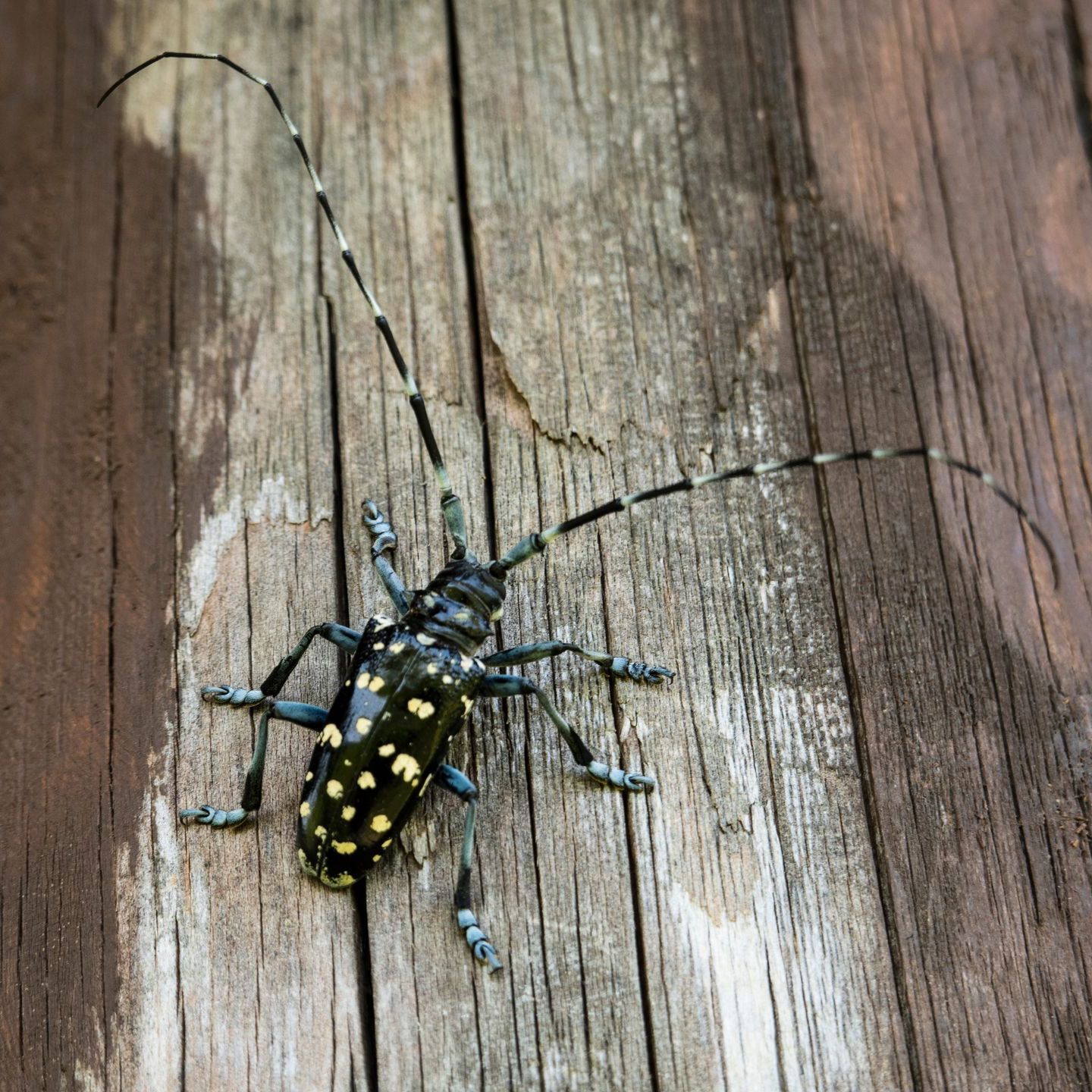
Asian Long-Horned Beetle
- Physical Characteristics:
- The Asian longhorned beetle is characterized by its distinctive appearance. It has a shiny black body with white spots, and its long antennae can be up to twice the length of its body.
- The adult beetles are relatively large, ranging from about 1 to 1.5 inches (2.5 to 3.8 cm) in length.
- Life Cycle:
- The life cycle of the Asian longhorned beetle includes four stages: egg, larva, pupa, and adult.
- Female beetles lay eggs in small depressions or pits they chew into the bark of host trees.
- Larvae tunnel into the tree, feeding on the wood and creating galleries as they grow.
- Pupation occurs inside the tree, and the adult beetles emerge by chewing their way out.
- Host Trees:
- The Asian longhorned beetle primarily targets hardwood trees, with a preference for maples, birches, poplars, willows, and other species.
- These beetles can cause significant damage to host trees, leading to decline and, in some cases, death.
- Damage:
- The feeding activities of the Asian longhorned beetle larvae disrupt the vascular system of trees, affecting water and nutrient transport.
- Infested trees exhibit signs of decline, such as wilting, yellowing of leaves, and eventually, dieback of branches.
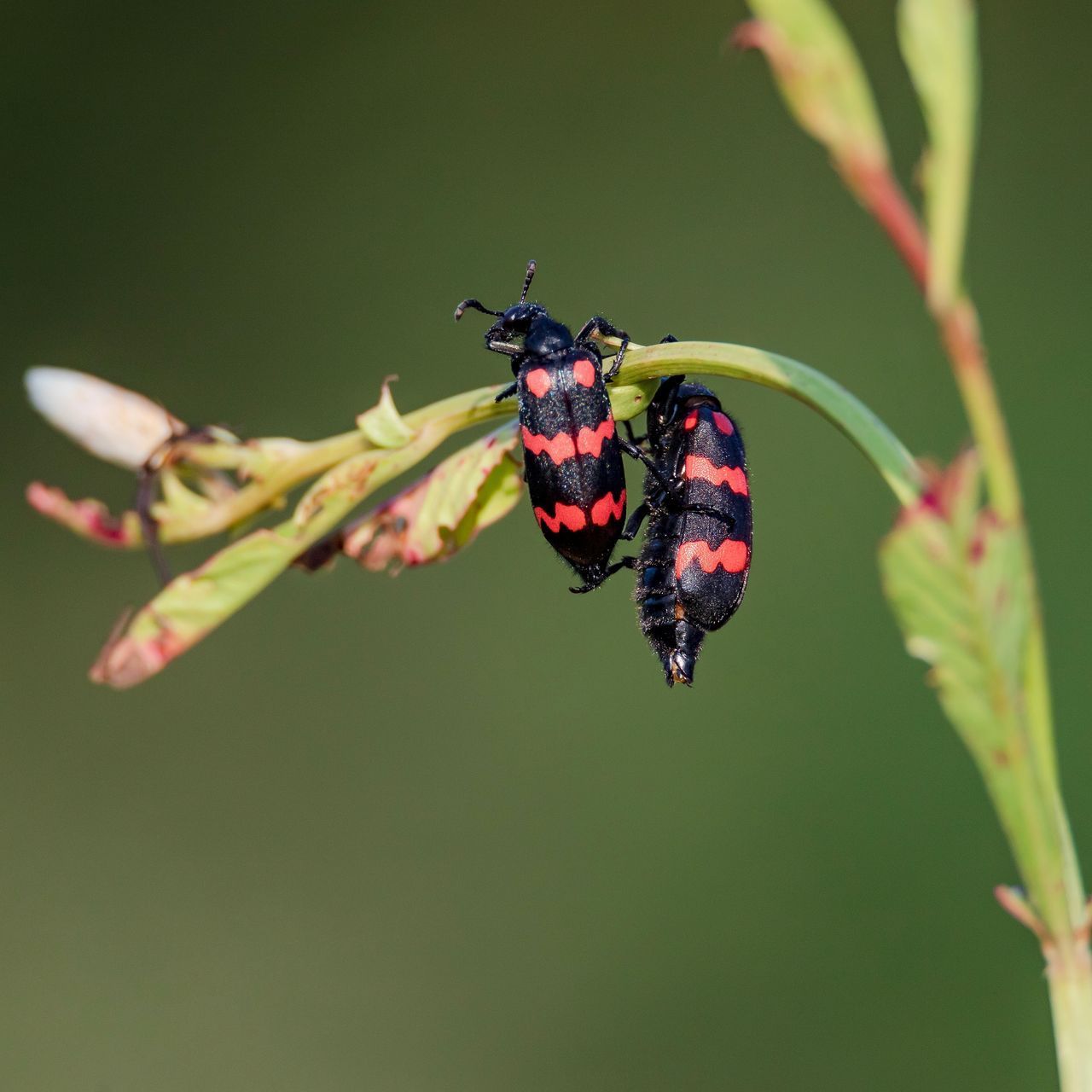
Blister Beetle
- Appearance:
- Blister beetles vary in size, color, and appearance, but they are generally elongated and soft-bodied.
- Colors can range from metallic blue and green to yellow, red, or black.
- Some species have distinctive patterns or markings on their wing covers.
- Diet:
- Adult blister beetles feed on various plants, primarily consuming flowers, leaves, and pollen.
- The larvae are often parasitic, with some species relying on grasshopper eggs or the nests of solitary bees.
- Cantharidin Production:
- Cantharidin is a toxic substance produced by blister beetles as a defense mechanism.
- The chemical is highly irritating and can cause blisters on human skin upon contact.
- Cantharidin is also toxic when ingested, and it can be lethal to predators.
- Habitat:
- Blister beetles are found in various habitats, including grasslands, meadows, and agricultural areas.
- They are attracted to flowering plants where they feed on nectar and pollen.
- Interaction with Livestock:
- Blister beetles are a concern for livestock, as cantharidin is toxic to animals.
- Ingestion of blister beetles in hay or other feed can lead to illness or death in horses and other livestock.
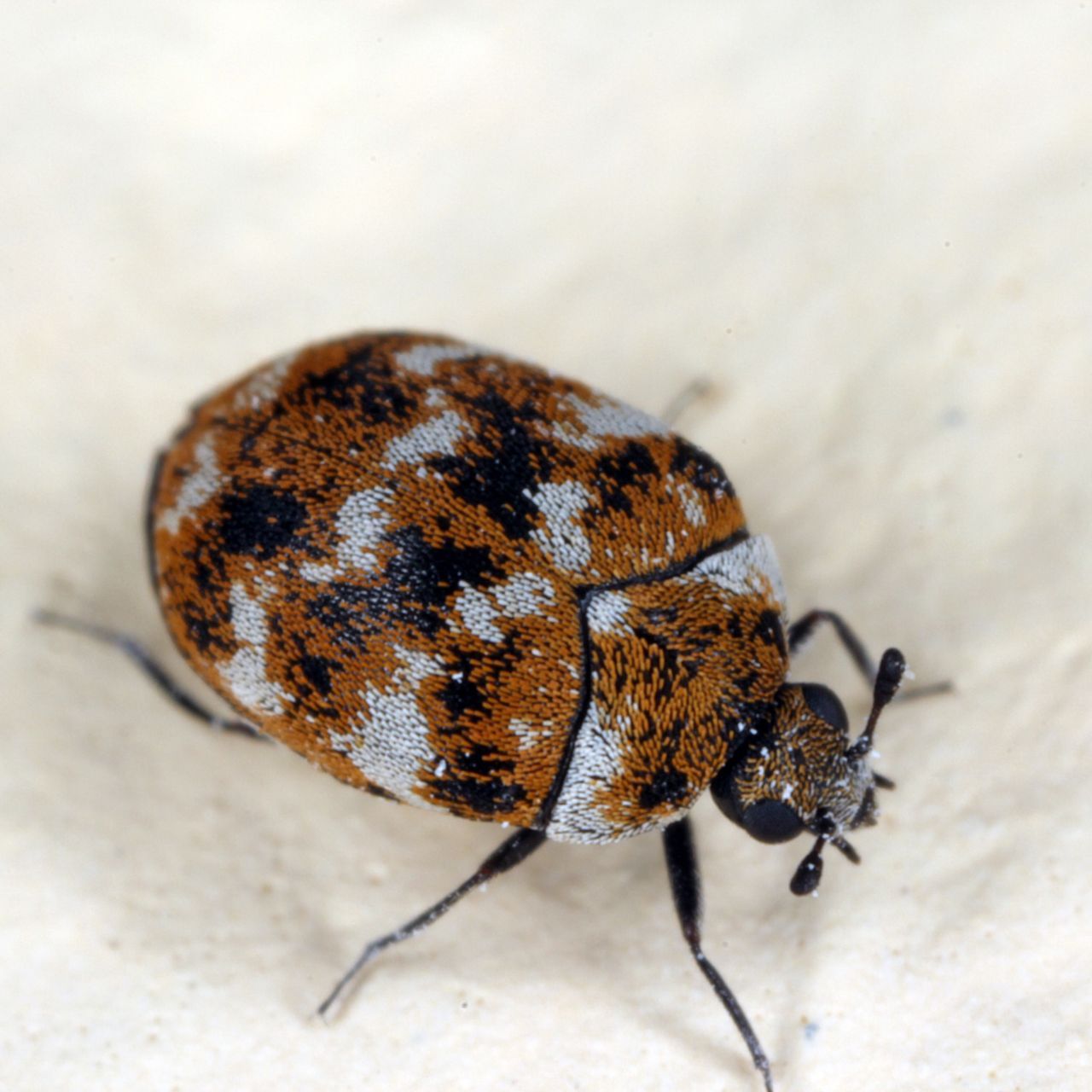
Carpet Beetle
- Appearance:
- Carpet beetles are small, oval-shaped insects with a diverse range of colors and patterns depending on the species.
- Adult carpet beetles are typically 2 to 5 millimeters in length.
- Some common species include the black carpet beetle, varied carpet beetle, and furniture carpet beetle.
- Diet:
- Carpet beetle larvae are voracious feeders and consume a variety of organic materials.
- They feed on natural fibers such as wool, silk, and feathers, as well as animal products like leather, fur, and stored food items.
- Adult carpet beetles primarily feed on nectar and pollen.
- Damage:
- Carpet beetle larvae are known for causing damage to textiles, carpets, clothing, and other items made of natural fibers.
- They may also infest stored food products, damaging grains, cereals, and other pantry items.
- Habitat:
- Carpet beetles are commonly found in homes, museums, and other indoor environments.
- They thrive in areas with a ready supply of their preferred food sources.

Cigarette Beetle
- Appearance:
- The adult cigarette beetle is small, measuring about 2 to 3 millimeters in length.
- It has a compact, oval-shaped body and is usually light brown to reddish-brown in color.
- Habitat:
- Cigarette beetles are commonly found in stored products, including tobacco, grains, cereals, dried fruits, spices, and various processed food items.
- They may also infest pet food, dried flowers, and natural history specimens.
- Diet:
- Cigarette beetle larvae are voracious feeders and can damage a wide range of stored products, especially those of plant origin.
- They are known to consume tobacco, cereal products, spices, dried fruits, and more.
- Damage:
- The larvae of cigarette beetles can cause significant damage by tunneling into and feeding on stored products.
- Infestations can result in contamination and loss of product quality.
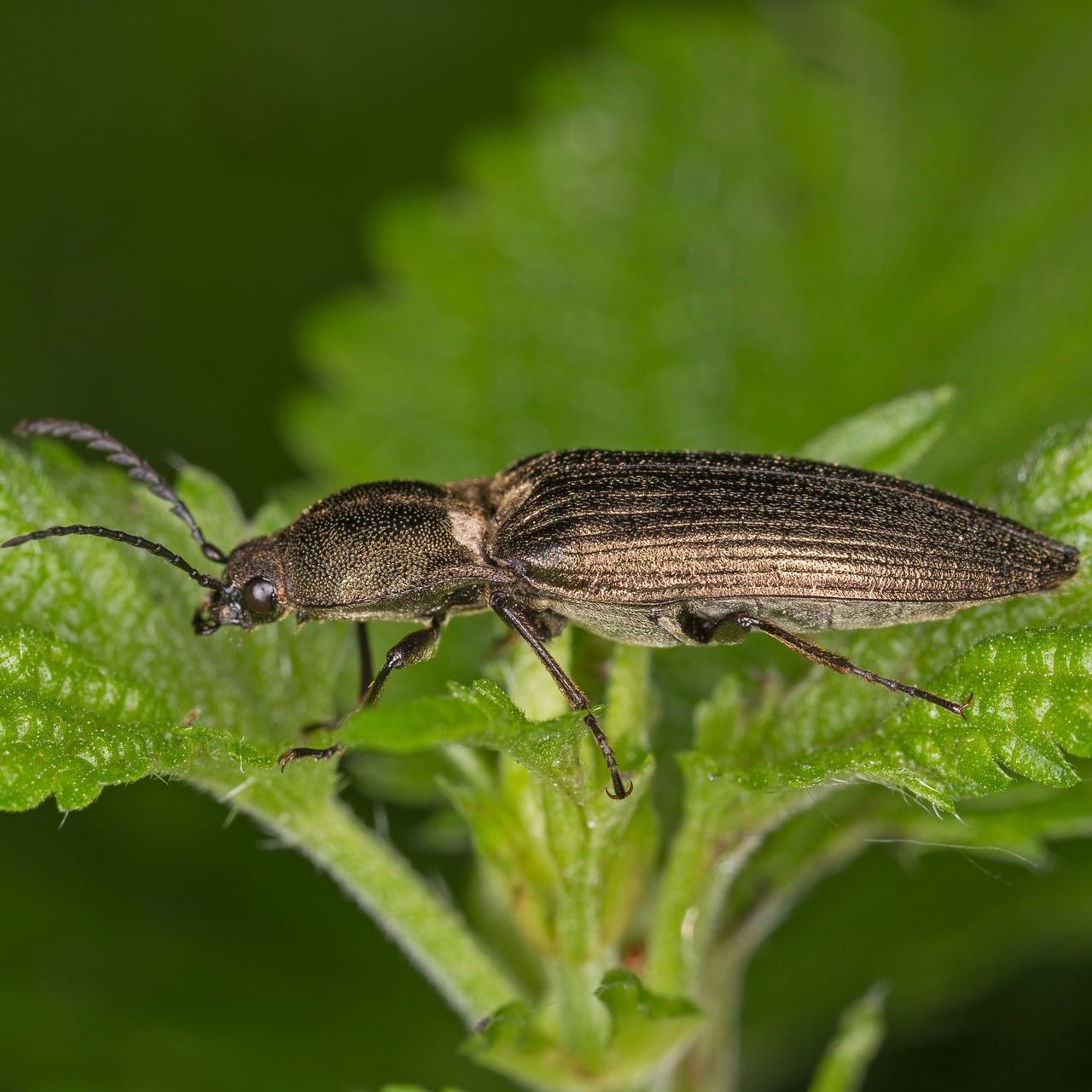
Click Beetle
- Appearance:
- Click beetles vary in size and color, but they generally have an elongated, somewhat flattened body.
- They range from 0.5 to 1.5 inches in length.
- The body may be cylindrical or slightly tapered, and their coloration can include shades of brown, black, or even metallic hues.
- Click Mechanism:
- The clicking mechanism is a unique feature of click beetles. When a click beetle is on its back, it bends its body and locks a spine into a groove on the underside.
- As the spine is released, it creates a rapid snapping motion that propels the beetle into the air, allowing it to right itself.
- Habitat:
- Click beetles can be found in a variety of habitats, including gardens, fields, forests, and grasslands.
- Both larvae and adults are found in soil, and some species may be attracted to light.
- Diet:
- Click beetle larvae are often referred to as wireworms, and they are soil-dwelling larvae that feed on plant roots, seeds, and other organic matter.
- Adult click beetles may feed on nectar, pollen, or may not feed at all.
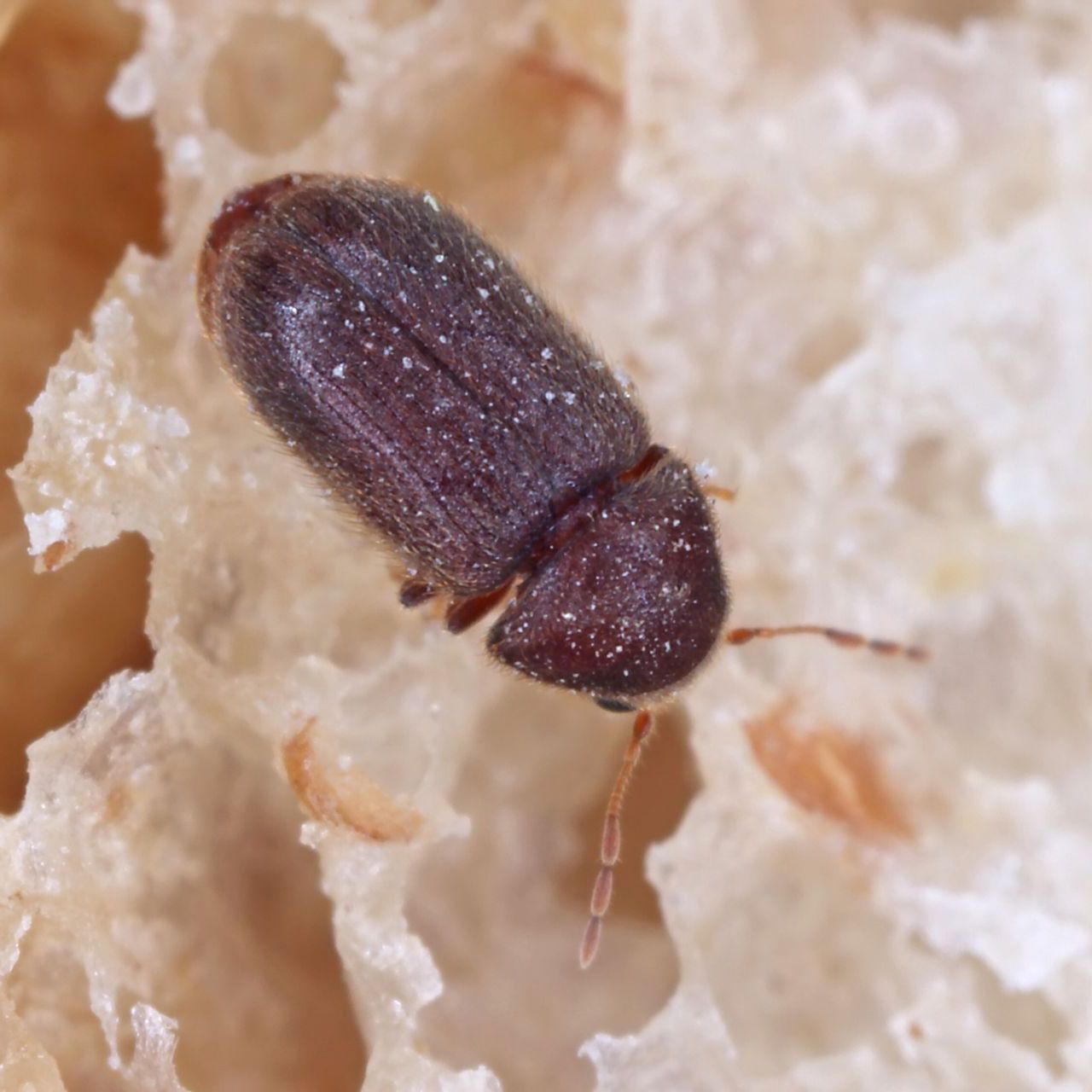
Drugstore Beetle
- Appearance:
- The drugstore beetle is small, measuring about 2 to 3.5 millimeters in length.
- It has an elongated, cylindrical body with a distinct humpbacked appearance.
- The coloration is usually reddish-brown, and the body is covered in fine hairs.
- Habitat:
- Drugstore beetles infest a wide range of stored products, including grains, cereals, spices, dried fruits, nuts, seeds, pet food, and tobacco.
- They are also known to infest non-food items such as books, leather, and 2museum specimens.
- Diet:
- Drugstore beetle larvae are voracious feeders and can damage a variety of stored items.
- They feed on grains, cereals, dried fruits, and other organic materials.
- Damage:
- The feeding activities of drugstore beetle larvae can result in contamination and loss of product quality.
- They can cause damage to packaging materials and lead to the formation of dust and frass (insect waste).
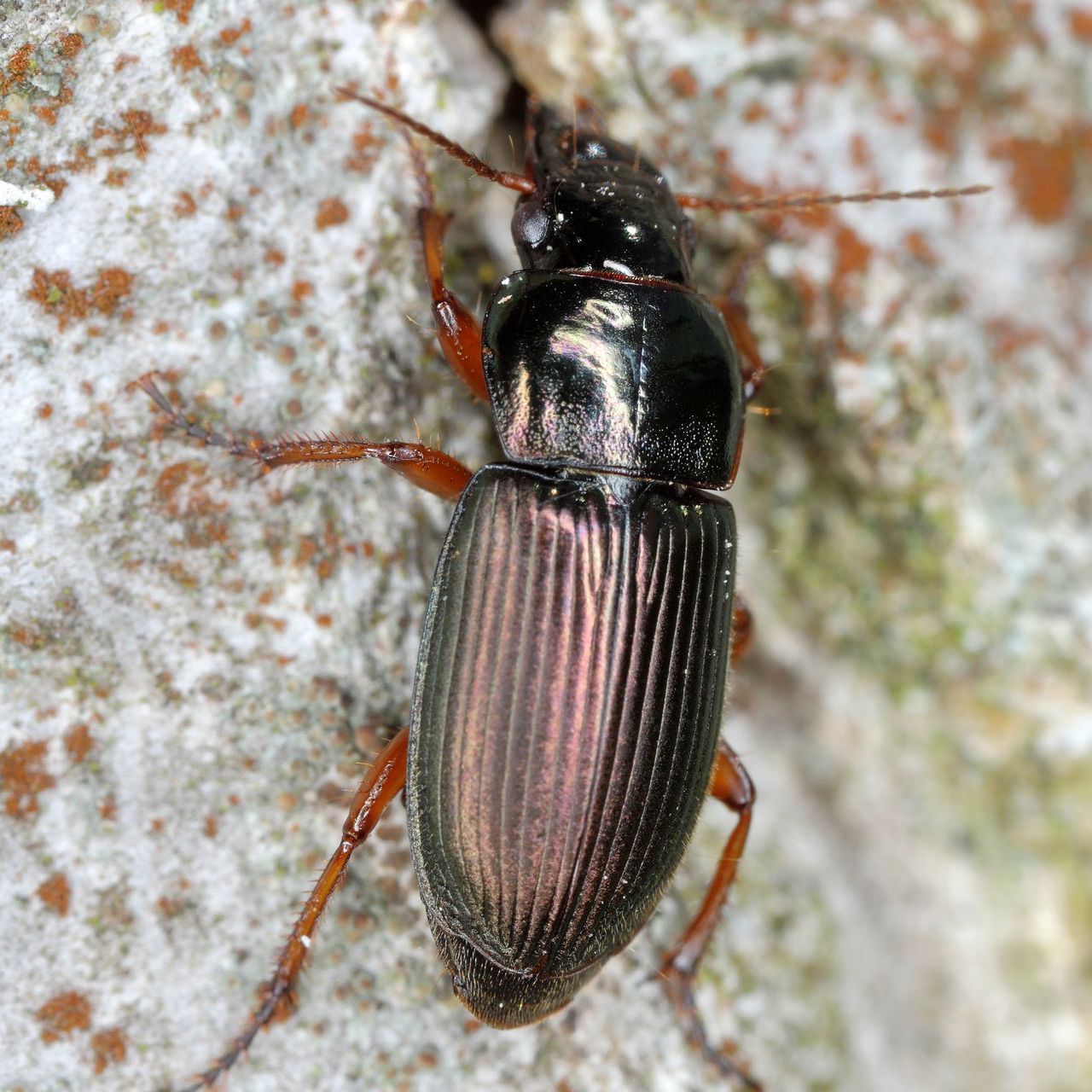
Ground Beetle
- Appearance:
- Ground beetles vary in size, ranging from small to relatively large.
- They typically have a flattened body, long legs, and prominent mandibles.
- Colors can range from black and brown to metallic hues, and some species have distinctive patterns.
- Habitat:
- Ground beetles are commonly found in diverse habitats such as forests, grasslands, agricultural fields, gardens, and urban areas.
- They are often associated with the ground, where they hunt for prey and seek shelter.
- Diet:
- Ground beetles are primarily predatory and feed on a variety of invertebrates, including insects, insect larvae, slugs, and snails.
- Some species are also scavengers and may feed on decaying organic matter.
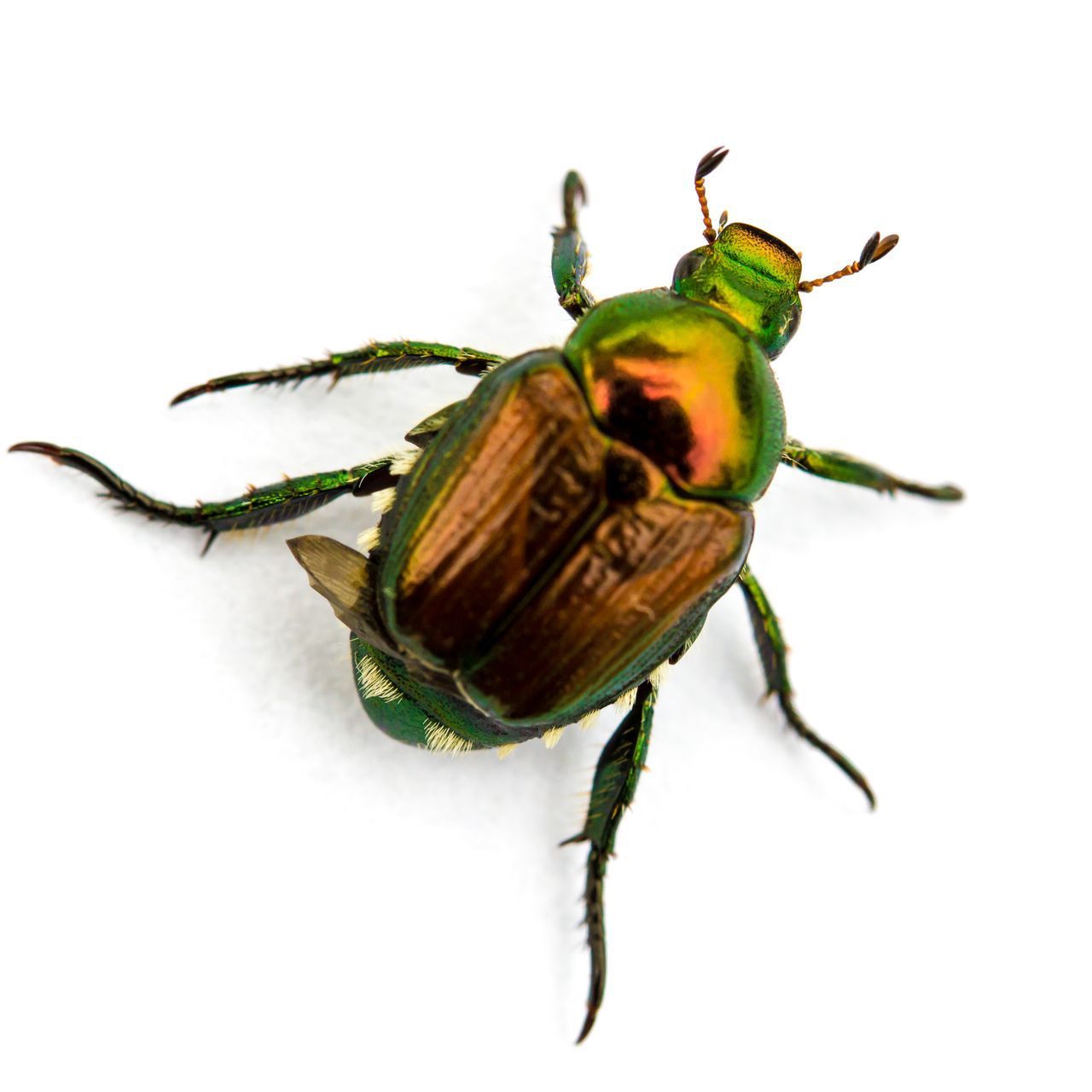
Japanese Beetle
- Appearance:
- Adult Japanese beetles are about half an inch long with a distinctive metallic green body and copper-brown wing covers.
- Along each side of the body, there are six tufts of white hair.
- The larvae (grubs) are C-shaped, cream-colored, and have a brown head capsule.
- Feeding Habits:
- Japanese beetles are voracious feeders and are known to attack over 300 species of plants.
- They feed on leaves, flowers, and fruits, often skeletonizing leaves by eating the tissue between veins.
- Host Plants:
- Japanese beetles have a wide range of host plants, including roses, grapes, apples, cherries, peaches, soybeans, and various ornamental plants.
- Damage to Lawns:
- Japanese beetle grubs can damage turfgrass by feeding on grass roots, leading to brown patches in lawns.
- Insecticides or biological control measures are often used to manage grub infestations.
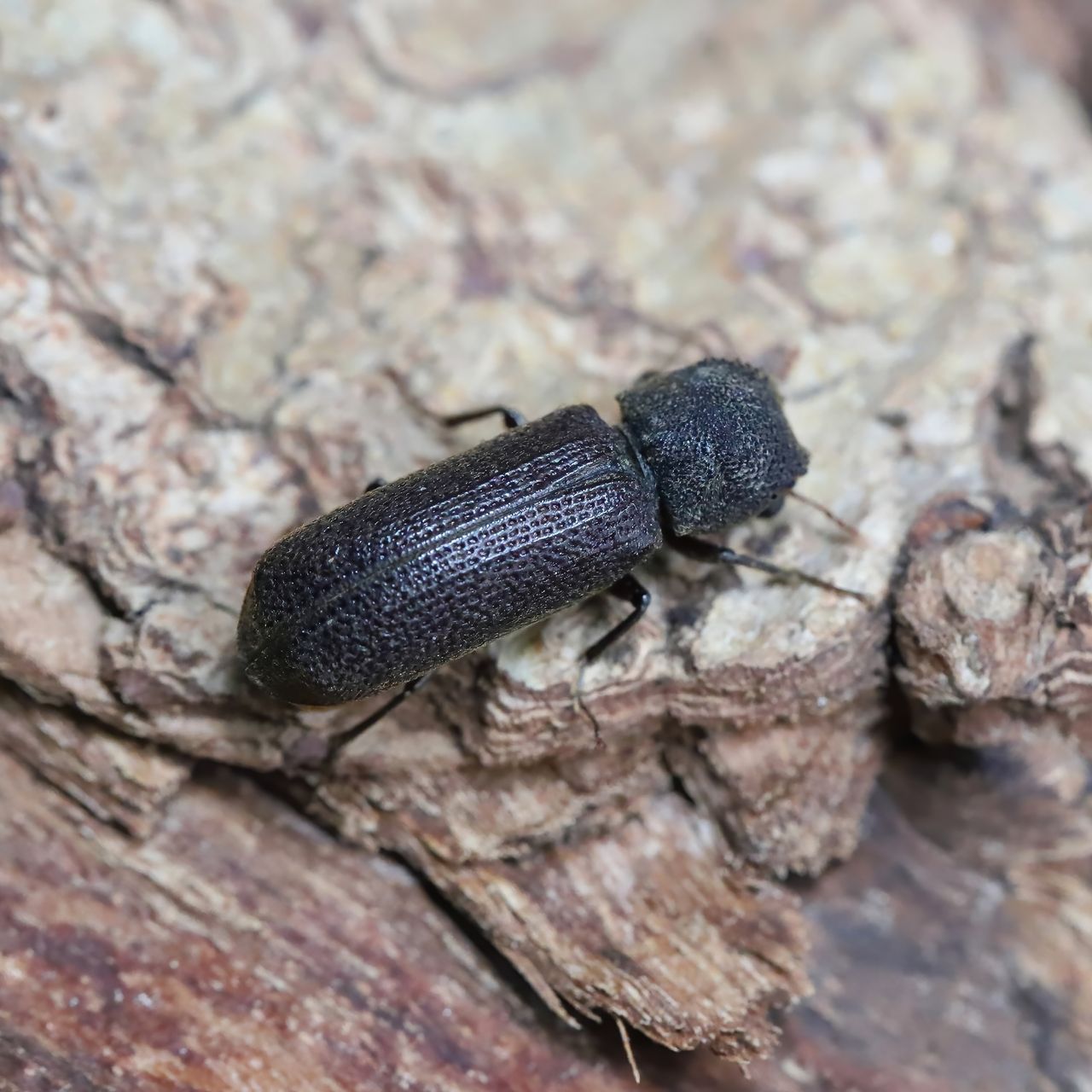
Powder-Post Beetle
- Appearance:
- Powderpost beetles vary in size and appearance depending on the species.
- Adults are typically small, ranging from 1/8 to 1/4 inch in length.
- They may be cylindrical or flattened, and colors can vary from reddish-brown to black.
- Diet:
- The larvae of powderpost beetles primarily feed on hardwoods, including oak, hickory, ash, walnut, and other deciduous trees.
- Some species prefer sapwood, while others target heartwood.
- Damage:
- The damage caused by powderpost beetles is often characterized by small, round exit holes in the wood surface.
- Fine, powdery frass (excrement) may be present around the exit holes, giving the beetles their name.
- Damage is mainly cosmetic but can compromise the structural integrity of the wood over time.
- Common Types:
- The three main families of Powderpost beetles are:
-Anobiidae: Includes species like the common furniture beetle (Anobium Punctatum).
-Lyctidae: Includes species like the lyctid powderpost beetle (Lyctus Brunneus).
-Bostrichidae: Includes species like the False Powderpost Beetles.